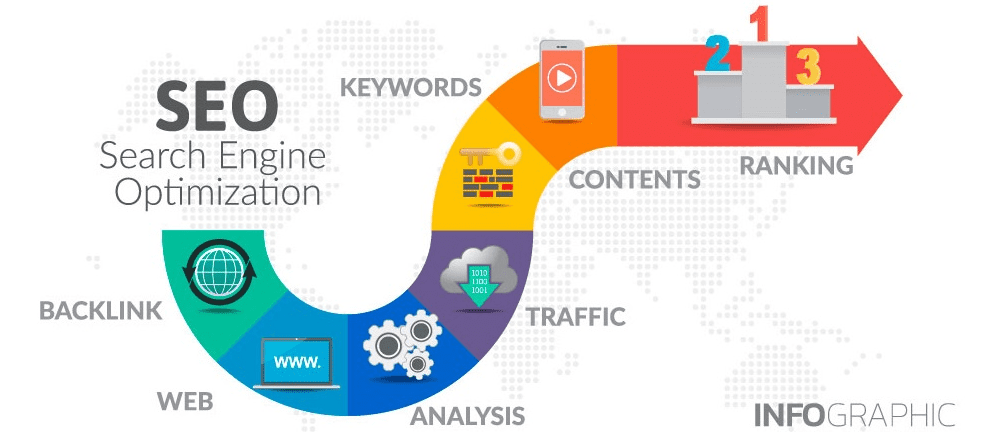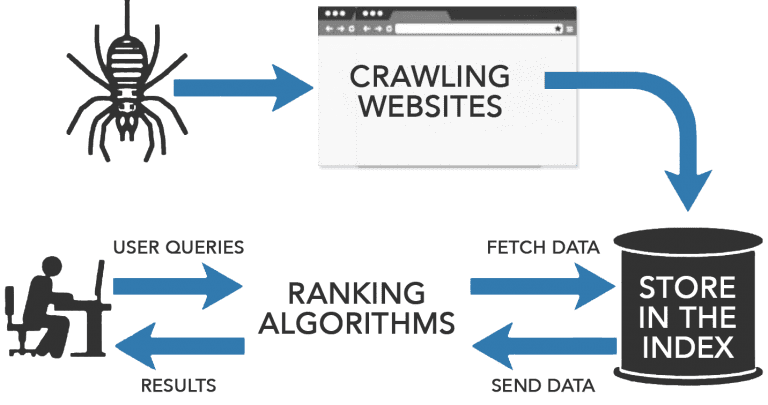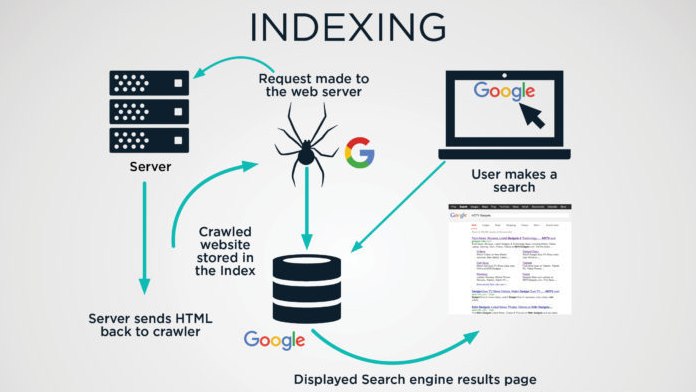- A Brief History of Digital Marketing
Search Engines: How Do They Work?
Estimated Reading Time: 15 minutes
Take a moment to consider how often and for what reasons you use Google or other search engines to find products or information. Our first question as we begin our journey is, ‘How do search engines categorize websites and serve them to searchers?” Using SEO techniques can improve visibility in search results and drive visitors to our website for the vast majority of searches.
- Knowing how to ensure your brand, company, or website is found by search engines is a key skill for digital marketers, and staying up to date on SEO will keep you on top of the game. While SEO changes in small ways occasionally, its basic principles remain the same.

Since Google's arrival in the late 1990s, we can divide SEO into three parts:
1. Technical Optimization
The process of technical optimization involves conducting activities on your website that are intended to improve search engine optimization, but are not related to content. These activities are often carried out in the background.
2. On-Page Optimization
An on-page optimization strategy is meant to make your content relevant and to improve the user experience on your website. This process involves targeting the right keywords within your content, which is possible through a content management system.
A Content Management System, or CMS, is software that allows website administrators to manage content. CMS allows you to upload or edit websites’ content, such as text, images, and videos and it is also used to creates and optimize the titles and descriptions for each page for search engine optimization.
WordPress, Wix, Drupal, Joomla, Magento, Shopify are some examples of content management systems.
3. Off-Page Optimization
In off-page optimization, you engage in activities that take place outside of your site in order to improve your rankings in search engines. A key contributor to this is backlinks, which help build the site’s reputation and ranking.
- There are three stages to the search engine process:
1. Crawling
Crawling is the first step. The purpose of web crawlers is to discover new pages and catalog the data on them. A web crawler, also known as a spider or robot, discovers new web pages by visiting them, as well as by checking the content of pages they have visited before to determine if it has changed.

The search engine crawls web pages based on links found. For example, if you have a blog post linked from your homepage, the search engine will crawl your homepage to find another link to follow, which may include the link to your new blog post. In some cases, websites tell search engines not to crawl certain pages, resulting in their exclusion from indexing.
2. Indexing
The next step involves indexing. The process of indexing is the method by which a search engine makes a decision about whether or not to use the content it has crawled. Search engines add crawled web pages to their index if the crawled pages are considered to be worthy.
The indexed content of a web page is filed and saved in a database, from where it can be retrieved at a later date. Websites that provide unique and valuable content are usually indexed. Search engines use this index to determine final rankings.

- Any of the following conditions may prevent a web page from being included in the index:
- The site isn’t mobile-friendly.
- Content on the page is considered duplicate.
- Low quality content.
- Content is considered as spam in nature.
- Unable to be crawled by the search engine.
- Due to lack on inbound links.
3. Ranking
Ranking is the third step, and it is by far the most crucial. When a searcher enters a keyword into a search engine, the results are sorted, ranked, and presented to them based on how useful and relevant they are to what they are searching for. The ranking process begins only after crawling, indexing, and analyzing are complete. As a result, your site will be ranked by the search engine.

A search engine uses over 200 ranking signals to sort and rank content. They all fall into three categories: technical optimization, on-page optimization, and off-page optimization.
Some of the ranking signals used by search engines include keywords in the title tag, page load speed, and reputation of the website.
Keywords In the Title Tag: Whether the keyword or a synonym was mentioned, In the title tag and on the page.
Page Load Speed: The speed at which the website loads and whether it is mobile-friendly.
Website Reputation: Credibility of the web page and website for the search topic.
Google's Algorithms
Google’s most important search algorithm is Google Hummingbird, which determines the ranking and order of search engine results.
There is also a sub-algorithm called RankBrain that utilizes machine learning. In order to detect unfamiliar words or phrases, RankBrain uses artificial intelligence.
Therefore, Google is able to convert keywords into concepts and topics that are well known – even when they are unusual.

RankBrain offers more than just the best keyword optimization results, but one that delivers the results expected by users as well.
The goal of any good SEO strategy is to optimize your website for both user experience and satisfaction while also utilizing the RankBrain ranking factor.
- In terms of effectiveness, the following three methods work best:
- Use long-tail keywords to optimize your website.
- Search engine users will be more likely to click on your listing if your title and description are optimized. Clickthrough rates are the percentage of people who visit your website after seeing you on Google. The best way to improve CTR is to use CTAs that include the most important keyword and to test with brackets (because they are real).
- By optimizing content, the visitor will spend more time on the page and the bounce rate (the number of visitors who leave after viewing one page) will be lower.
- The Three Most Important Factors in Google's Search Rankings
- Links: This refers largely to backlinks and off-page optimization.
- Content is key to on-page optimization.
- Google developed the RankBrain algorithm to reward sites that offer the best user experience through machine learning.
BERT is an algorithm Google introduced in 2018. By using BERT, search engines can better understand the language of the searcher and the context of their search in order to provide better results.
Final Thoughts
You need to stay up-to-date with the latest research and trends in the digital marketing industry since it is constantly evolving.
The good news is that MEDIAHUBWORLD can assist. You can benefit from our expertise while devoting your resources to other aspects of your business. Then, as a team, you will see your company grow.


